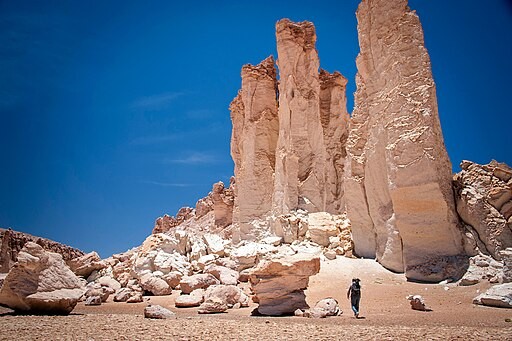Along the western coast of South America lies the Atacama desert, whose geographical features make it a good analog of the Martian environment.

Driest Desert in the World
The Atacama desert is a sparsely populated and rainless plateau that runs east from the Pacific Ocean to the Andes Mountains. It forms a continuous strip for almost 621 miles (1,000 kilometers) along the narrow coast of northern Chile. This place is considered one of the driest deserts in the world, with approximately 1 mm of annual rainfall in some regions. It is almost without vegetation, except along slopes moistened by drizzle during the winter.
Because of its geographical characteristics, the Atacama Desert has been used in testing lunar landers and Mars rover prototypes since it resembles extraterrestrial surfaces. In 2019, a robot rover deployed in the area had successfully recovered subsurface soil samples during a trial mission. Scientists found microbes that can adapt to high salt levels, similar to what may be expected in the actual subsurface of the red planet.
What Makes the Atacama Desert So Dry?
By definition, a desert is a hot area of land that receives very little rainfall, not more than 200 mm a year. During the daytime, its temperatures can reach as high as 55 degrees Celsius and cool below zero degrees Celsius at night. Deserts are created by air that rises over the equator and comes down over the Tropic of Cancer and the Tropic of Capricorn.
As the rays of the Sun hit the equator at a direct angle, the land over the equator becomes very hot. The rising hot and wet air leads to frequent rain in these areas. As the air cools down, it moves north and southward, where it gets drier.
The calm and dry air sinks to the ground over the Tropic of Cancer and the Tropic of Capricorn, creating an area of high pressure. After that, the warm air near the surface returns to the equator and causes the air to rise. Meanwhile, as the rising air cools, clouds and rain form, which explains how the bands of cloudy and rainy weather near the equator create a tropical climate.
Different factors make the Atacama Desert than other deserts. First, a strong inversion layer is formed by the cold Humboldt Current, which flows northward along the Chilean coast. The cold, humid air produced by the sea remains along the coastline as an effect of the hot air masses of the South American continent. It not only reduces the moisture in the air, but it also creates nearly 350 days of clear skies inland.
Another reason is that the Atacama Desert lies over high altitudes more than 16 miles (2,500 meters) above sea level. This contributes to the low drying temperatures and very low humidity in the air, which is only about 10%.
It is also important to note that the Andes Range runs along the Atacama Desert, where it acts as a natural barrier from the moisture of the Amazon. In this phenomenon known as the 'rain shadow' effect, protection from prevailing winds produces a dry land region on one side of the mountain range. These protected sides are known as the 'leeward side' or the 'down-wind' side.
On the other hand, prevailing winds carry air toward the mountain range. As the air rises and cools, it leads to the condensation of water vapor and the formation of clouds. On this side of the mountain, called the windward side, precipitation falls as rain or snow.
The presence of precipitation enables the windward side of a mountain range to become moist and lush. After passing over the mountain range, the air moves down the other side, where it gets warm and dried out. This dry air creates a rain shadow. Land areas in a rain shadow are usually arid and receive little precipitation and clouds. This creates desert conditions on the leeward side of the range cover.
Nowhere else do these climatic features come together as they do in the Atacama desert.
RELATED ARTICLE: Dubai's Martian City Is Currently Being Built by Architects - Here's an Inside Look
Check out more news and information on the Desert in Science Times.


![Earth's Quasi-Moon Kamo‘oalewa Could Originate From Lunar Surface Not Asteroid Belt [Study]](https://1721181113.rsc.cdn77.org/data/thumbs/full/53275/89/56/50/40/earths-quasi-moon-kamo-oalewa-could-originate-from-lunar-surface-not-asteroid-belt-study.png)











